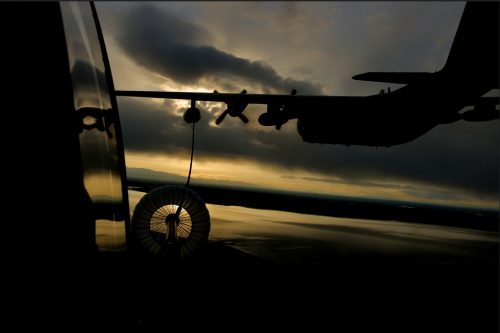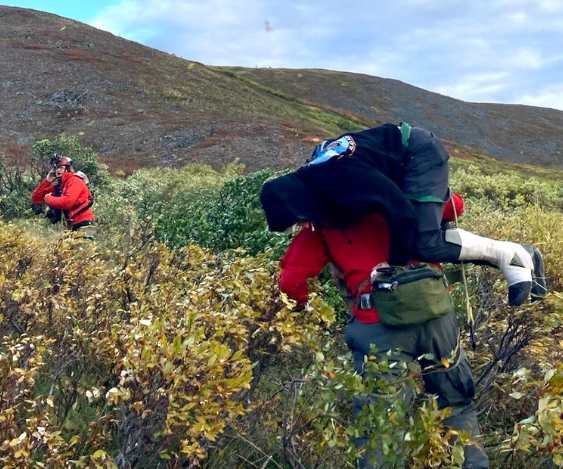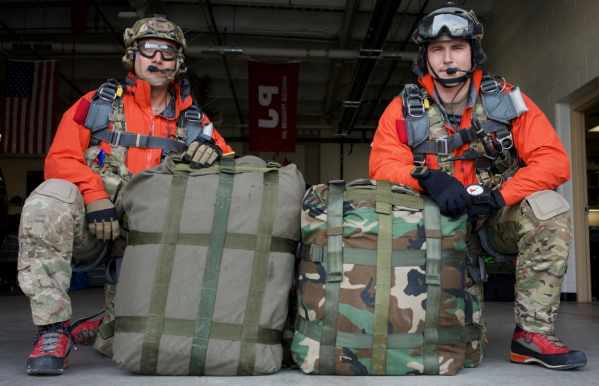[dropcap]J[/dropcap]OINT BASE ELMENDORF-RICHARDSON, Alaska — Airmen with the Alaska Air National Guard’s 210th, 211th and 212th Rescue Squadrons rescued a pilot and a passenger of a Cessna 172 that crashed Nov. 27 on takeoff from southwest Montague Island.
According to Alaska Air National Guard Staff Sgt. Jeremy Rhodes, Alaska Rescue Coordination Center, the mission was opened in response to the receipt of a 406 Emergency Locator Transmitter beacon signal.
An HH-60G Pave Hawk helicopter from the 210th Rescue Squadron and an HC-130J Combat King II from the 211th Squadron launched from Joint Base Elmendorf-Richardson. Aboard the helicopter were pararescuemen who are highly trained personnel specializing in rescue operations.
Shortly after the ELT signal was received, it stopped broadcasting because the plane caught fire and burned. The pilot used a satellite phone to call his family who, in turn, called the U.S. Coast Guard 17th District. The Coast Guard relayed the information to the AK RCC.
[content id=”79272″]
Before the aircraft burned, the survivors managed to retrieve their tent, and they set it up as shelter from the rain.
Initially, the HH-60 crew had difficulty getting to the crash site via Moose Pass due to inclement weather. Another HH-60 was launched to try a different route. The first HH-60 refueled in Seward before successfully navigating along the Kenai Peninsula coastline to the crash site. The helicopter landed and the pararescuemen rescued the individuals. The second HH-60 returned to JBER shortly after launch.
Airmen of the 176th Wing launch a 210th Rescue Squadron HH-60G Pave Hawk Nov. 27 at Joint Base Elmendorf-Richardson, Alaska. The HH-60 pictured here was recalled when pararescuemen of the 212th Rescue Squadron earlier deployed with another HH-60 crew and rescued a pilot and a passenger of a Cessna 172 that crashed on Montague Island. Video-Davvid Bedard
The HC-130 provided mission control and communications relay between the helicopter and the AK RCC.
The pilot and passenger were flown to Providence Alaska Medical Center’s rooftop helipad and released to hospital personnel.
Alaska Air National Guard Maj. Andrew Williams, AK RCC deputy director, said it was a credit to the pilot he had two means of notifying authorities after the crash: the plane’s onboard ELT and his satellite phone.
Williams stressed the importance of registering ELTs to ensure officials have the most up-to-date information.
“Registering is key because contact information is key,” Williams said. “It helps us identify the person and the aircraft as well as track down the flight plan.”
Source: Alaska National Guard








